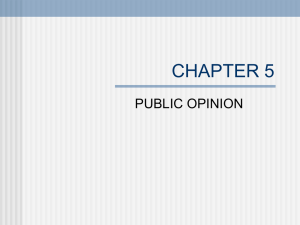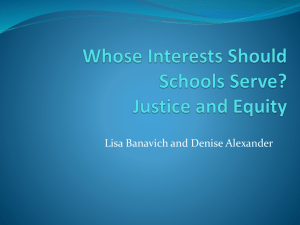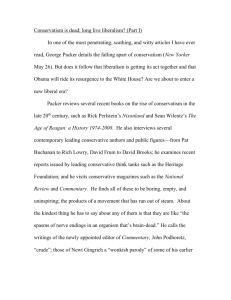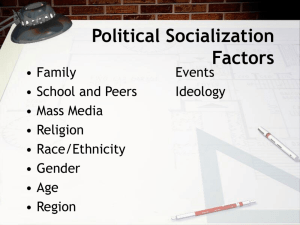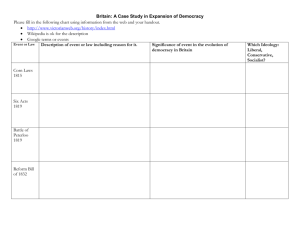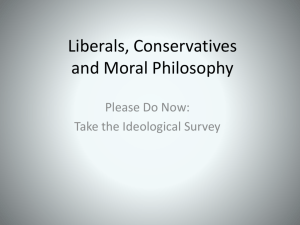Chapter 7 Public Opinion
advertisement
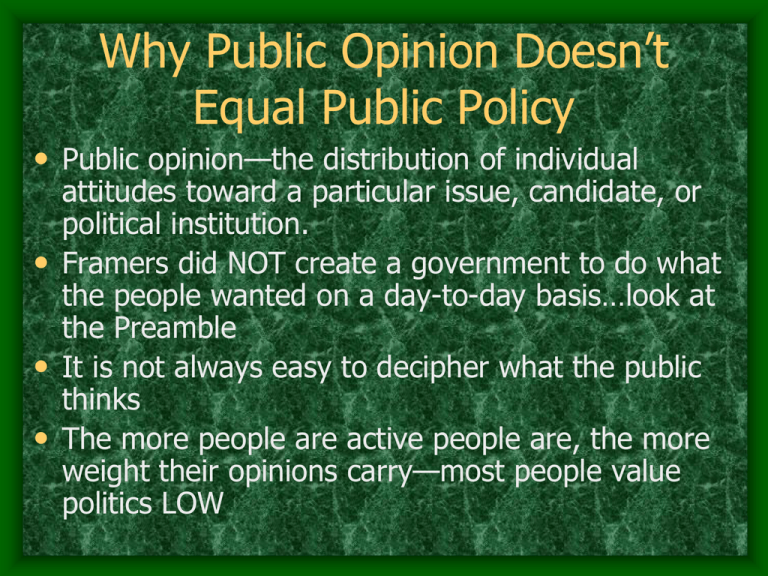
Why Public Opinion Doesn’t Equal Public Policy • Public opinion—the distribution of individual attitudes toward a particular issue, candidate, or political institution. • Framers did NOT create a government to do what the people wanted on a day-to-day basis…look at the Preamble • It is not always easy to decipher what the public thinks • The more people are active people are, the more weight their opinions carry—most people value politics LOW Origins of Political Attitudes: “Agents of Socialization” • Political socialization: the process through which an • • • • • individual acquires his/her own political orientations Family—majority of young people identify with their parents’ political party, but this influence has declined with rise of independents Religion—Protestants conservative; Jews and Catholics liberal on economic issues, Jews also liberal on social issues—emphasize social justice Jews/Catholics once poor immigrants, sided with Democrats. Christian Coalition—mobilizes grassroots Republicans, place importance on personal responsibility Gender—males more conservative, females will support female candidates…party alliances have switched as party stances switched The Role of Schooling: Why are More Educated People Liberal?? • Individual traits may account for liberalism • • • • (family, intelligence, temperament) Students more exposed to politics from more sources (liberal cultural elite) College teaches liberalism (professors decidedly liberal…demand intellectual and hence, civil liberties) Effect extends long after college But wealth sometimes tempers these effects Public Opinion Differences • The devil is in the demographics. • U.S. has long been a melting pot • Social Class: V.O. Key : professionals more conservative on social policy, internationalist views (50s), now less so • Race: Seymour Lipset: Whites opposed to affirmative action, blacks oppose death penalty, races agree on banning abortion on demand, ban on drugs. Asians (esp. Japanese) vote like whites, Hispanics differ • Region: South more accommodating to business, less friendly to fiscal redistribution New Phenomenons: • “Gray Tigers”-senior citizens very powerful • Sunbelt increasing in power over “Rustbelt” • Reapportionment accelerates this • Growing influence of Hispanic population Political Ideology • Def’n: A coherent and consistent set of beliefs about who ought to rule, what principles rulers should obey, and what policies rulers ought to pursue • People regularly have “inconsistent” opinions (ex: wanting to spend more on both national defense and welfare) • Elites have MASSIVE influence in framing the debate—they may not tell you how to think, but they make you think certain issues are important Changing Meaning of Liberalism • Old (Classical Liberalism or European Liberalism): Favors personal and economic liberty. Would have supported free market and opposed government regulation of trade • New: Favors active national government, social welfare, assisting organized labor in bargaining, civil rights, affirmative action • Changed extensively by FDR: Activist Changing Meaning of Conservatism • Old: Opposed excesses of French Revolution and its emphasis on personal freedom, wanted to restore power of the State, the Church, and the aristocracy • Now: Favor foreign intervention, less government, free market, states’ rights Analyzing Consistency • Pure Liberals (17%)—liberal economically and socially, want to tax rich heavily, regulate business, fiscally redistribute, cure economic causes of crime, guarantee abortion rights, protect rights of the accused and 1st amendment freedoms • Pure Conservatives (28%)—conservative economically and socially, want to cut back welfare state, allow free market to operate, low taxes, lock up criminals, curb deviant behavior • Libertarians (21%)—conservative economically, liberal socially • Populists (24%)—liberal economically, conservative on social issues Is there a “New Class?” • Def’n: Those who are advantaged by the • • • • power, resources, and growth of GOVERNMENT (not business) 2 explanations of well-off liberals: 1) Directly benefit from government 2) Liberal ideology infusing postgraduate education Traditional MC also split in 2: Republican MC: 4 years college, suburban, church-affiliated, probusiness, socially conservative. “Silent majority” Democrat MC: Postgraduate, urban, critical of business, liberal socially Party Membership • Democrats: African-Americans, Jews, union members, educated people, many Catholics (changing) • GOP: White males, Protestants, business community, higher-income groups, suburbanites, some Catholics because of Republican view on abortion (“Knights of Columbus” Catholics) Public Opinion Polling • Rarely a single public opinion; diversity produces • • • • • • • many opinions Polling developed during 1930s (Gallup) Polls rely on a SAMPLE of the population or UNIVERSE. 1500-2000 people can provide a very good overview of what the universe thinks Key to accuracy: random sampling Sampling error will always exist; minimize in several ways (larger sample) Most polls use sophisticated computer software, random digit dialing Problems: Nonresponse rate increasing, bad techniques (1936 poll predicts Landon victory) The Role of Polls in American Democracy • Supporters: It’s a tool for democracy that • • • • • keeps leaders responsive Critics: Makes politicians too concerned with following rather than leading Benjamin Ginsberg: polls actually weaken democracy because it takes into account passive voices Polls may create a bandwagon effect Exit poll most criticized poll Bias in questions, wording of questions can skew results Results of Polling • Average American has low level of knowledge. Name current leaders test (VP, Cabinet, CJ SCOTUS) Chapter 7 Learning Objectives • After reading and reviewing the material in this chapter, the • • • • student should be able to do each of the following: 1. List the sources of our political attitudes and indicate which are the most important. 2. Explain why there are crosscutting cleavages between liberals and conservatives in this country. Assess the significance of race, ethnicity, and gender in explaining political attitudes. 3. Define political ideology and give reasons why most Americans do not think ideologically. Summarize the liberal and conservative positions on the economy, civil rights, and political conduct. 4. Discuss the new class theory as an explanation for changes in attitudes. Analyze why this change is causing strain in the political party system.

